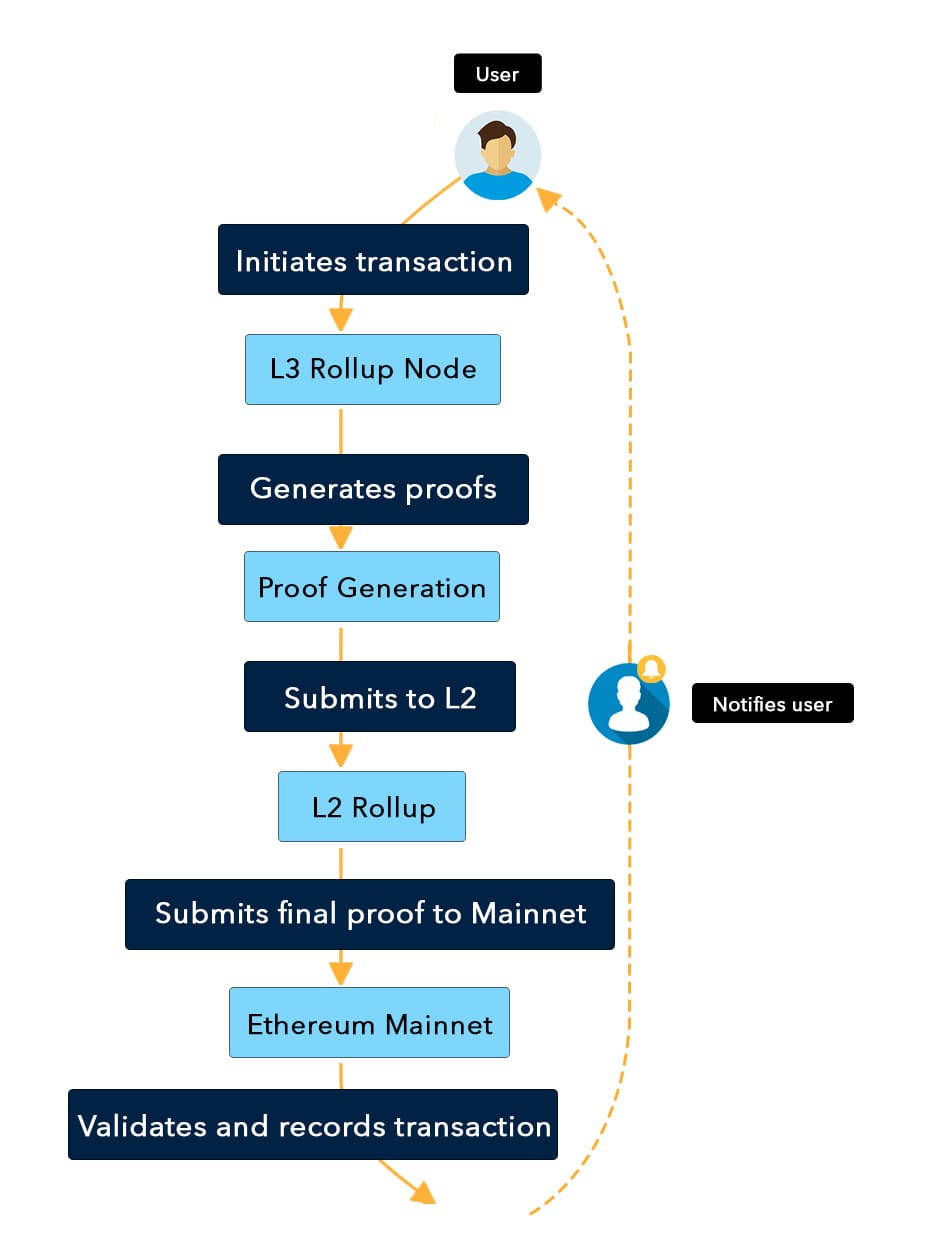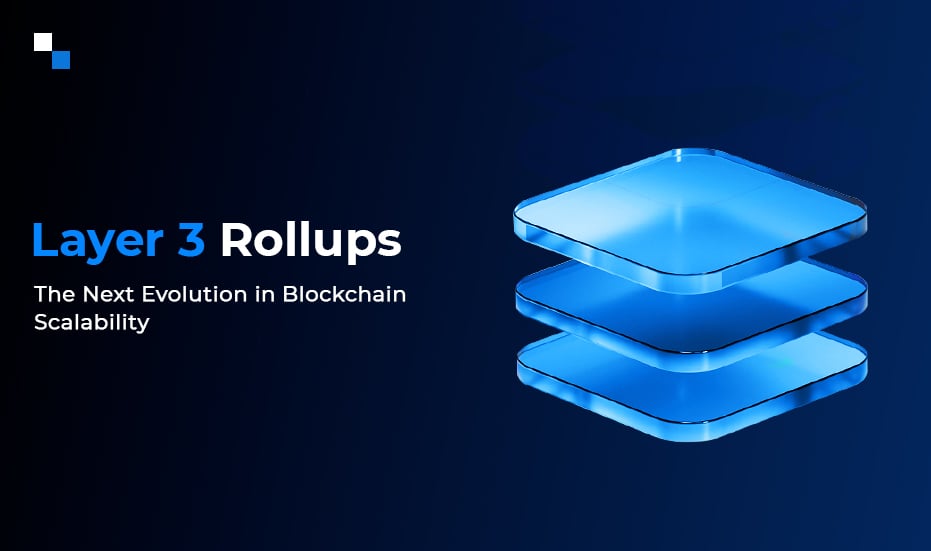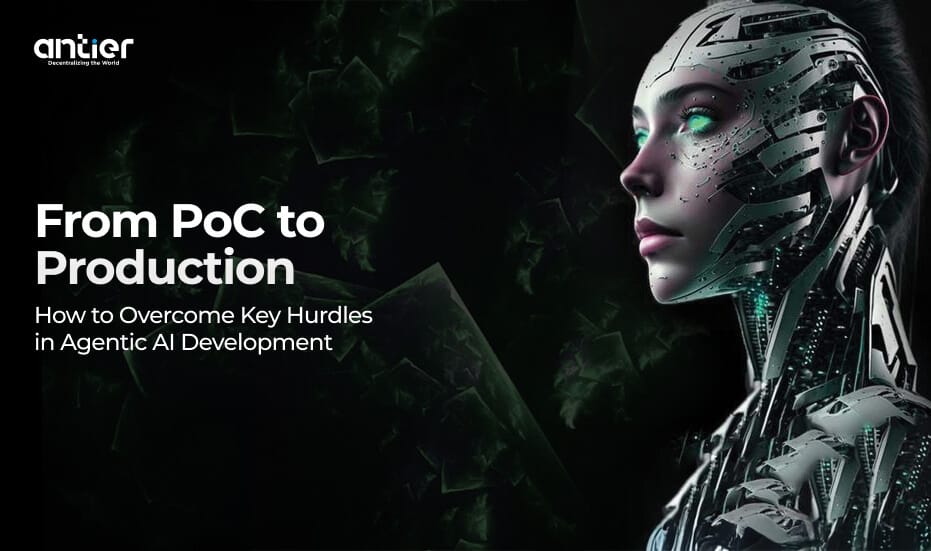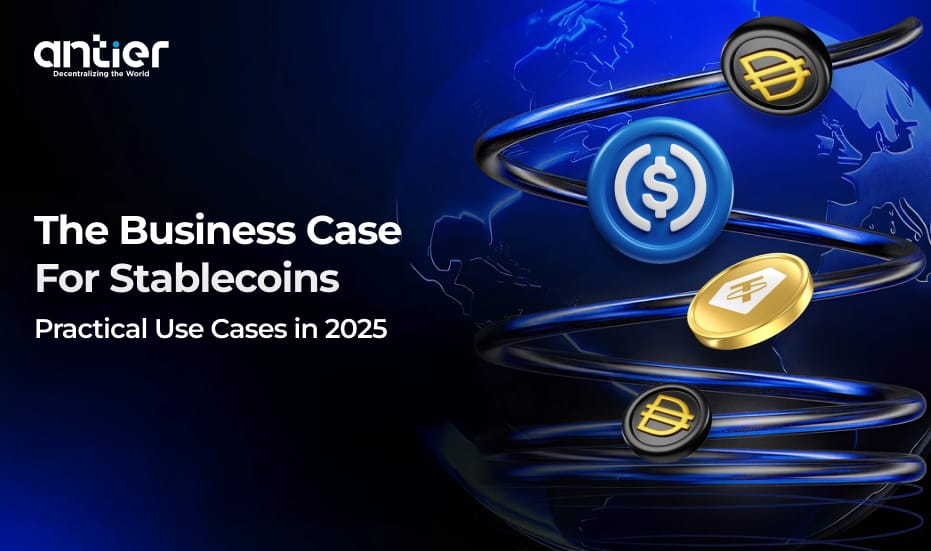As the demand for faster transaction processing in the blockchain space continues to grow, numerous innovations are being developed to meet this need. While Layer 2 solutions like rollups enhance efficiency, there is still a strong need for blockchain technology that is as fast, secure, and seamless as swiping a credit card. In this case, Layer 3 rollups emerge as a groundbreaking innovation capable of redefining how blockchain networks are scaled, optimized, and utilized.
Layer 3 rollups aren’t just another buzzword; they represent the next evolutionary leap in blockchain architecture. Layer 3 rollup chains build on the scalability breakthroughs of Layer 2 and add specialized functionalities that aim to boost performance without compromising security or decentralization. Curious about how these scalability maestros work and what makes them so promising? Let’s dive in!
What are Layer 3 Rollups?
Layer 3 rollups, also known as rolling rollups, refer to a third layer of blockchain built on top of existing Layer 2 to address the limitations of L1 and L2 chains. The rollup layer builds a network of interconnected rollups that can communicate and share data, leading to enhanced scalability and efficiency across blockchain networks. Layer 3 rollup chains do not just offer a scalability add-on for dApps, but also deliver a better user experience, which has now become a necessity to onboard maximum users to the web3 space.
Understanding The Need for Layer 3 Rollups
Layer 3 rollups are an advanced layer of a blockchain network that addresses the scalability challenges faced by L1 and L2 networks. It offers numerous advantages over other existing chains, which sets it apart from the crowd in the web3 space. Take a look-
- Transaction Throughput
L1 and L2 chains often struggle with limited transaction throughput, which can bottleneck global payment systems. Layer 3 scaling solutions process transactions off-chain while still leveraging the security of other blockchain layers. It enables the network to handle a higher volume of transactions and improves throughput, which further helps meet the demands of global payments efficiently.
- Network Congestion
Blockchain networks also experience congestion, especially during peak usage, which results in slow transaction speeds and high fees. Layer 3 rollups offload much of the burden of transaction processing from the main chain which not only helps resolve the issue of congestion but also results in faster transaction processing at significantly lower fees.
- Flexibility
Traditional blockchains can be difficult to upgrade or customize, which hinders adaptability to emerging trends. Upgrades and customizations are convenient with layer 3 rollups as they allow the network to quickly adapt to evolving market needs and technological changes without altering the existing chain functionality.
- Security Concerns
Security is a prominent concern in blockchain networks, especially when dealing with large amounts of sensitive data. Layer 3 rollups incorporate advanced cryptographic techniques, including fraud proofs and validity proofs that mitigate security risks to a great extent. These security methods in rolling rollups boost the security of the transactions processed off-chain and reduce the potential for attacks and data breaches.

- Unmet Regulatory Compliance
Regulatory compliance, including KYC (Know Your Customer) and AML (Anti-Money Laundering) regulations, remains a challenge for blockchain platforms. Layer 3 rollups address this challenge by integrating tools such as KYC/AML checks and zero-knowledge proofs, which ensure user privacy while maintaining compliance with regulatory requirements.
- Energy Consumption
Energy consumption is a significant concern with Proof-of-Work networks and large-scale blockchain applications. Layer 3 rollups offload transaction processing from Layer 1 networks, which reduces the need for energy-intensive computations on the main chain. It further helps lower the overall energy consumption of blockchain networks and makes this layer more sustainable than other existing chains.
- High Transaction Fees
High transaction fees, especially during network congestion, make blockchain solutions less feasible for microtransactions. The transaction batching in layer 3 rollups aggregates multiple transactions into a single batch, which reduces the cost per transaction and makes rolling rollups an ideal choice for transaction processing.
How Do Layer 3 Rollups Function?

Step 1: User Initiates Transaction
The first step involves the user initiating a transaction on the blockchain, such as sending a token, interacting with a smart contract, or any other blockchain-based action. All these tasks are performed on an application built on the layer 3 protocol.
Step 2: L3 Rollup Node
The Layer 3 rollups node is a specialized node that handles transactions with more efficiency than Layer 2 blockchain rollups. It processes the user’s request and ensures that the transaction is ready for the next steps. Layer 3 rollups are designed to boost scalability, so they can manage large numbers of transactions quickly and with less computational overhead than traditional Layer 2 systems.
Step 3: Generate Proofs
Once the transaction is processed, the Layer 3 rollup chains generate cryptographic proofs. These proofs are mathematical validations that confirm the integrity and correctness of the transaction without needing to submit all of the transaction data to the Ethereum mainnet.
Step 4: Proof Generation
The proof generation process is pivotal to knowing whether the transactions are valid and secure or not. The Layer 3 rollup node creates cryptographic proofs, such as zero-knowledge proofs (ZKPs) or validity proofs, which guarantee that the transaction has been processed correctly as per the rules of the Layer 3 rollup protocol.
Step 5: Submits to L2
The next step involves sending the cryptographic proof to the Layer 2 rollup for aggregation. The Layer 2 blockchain rollup is responsible for aggregating multiple transactions from Layer 3 rollups to increase throughput and efficiency. This aggregation process also reduces the cost and complexity of interacting with the Ethereum mainnet, as only the aggregative proof is needed to be processed.
Step 6: L2 Rollup Aggregates and Validates
The Layer 2 rollup collects and validates the multiple Layer 3 transactions while ensuring they adhere to the rules of the rollup. This is a key function of the Layer 2 rollup, which processes and combines multiple proofs from various rolling rollups into a single batch. This helps reduce the computational load on Ethereum and amplify transaction throughput.
Step 7: Submits Final Proof to Mainnet
After the proof aggregation, Layer 2 blockchain rollups submit the final proof to the Ethereum mainnet. This aggregated proof acts as a summary of all the transactions that have taken place on Layer 3 rollups. Ethereum network validates only this final proof that contributed to the system’s efficiency.
Step 8: Ethereum Mainnet Validates the Final Proof
The Ethereum mainnet validates the final aggregated proof to ensure that all transactions within the Layer 3 rollups chain are legitimate. Since the Ethereum mainnet only needs to validate the proof, this step is much faster and more cost-effective than validating each transaction individually. This significantly enhances scalability and reduces the load on the main Ethereum chain.
Step 9: Validates and Records Transaction
Once the Ethereum mainnet validates the proof, the final step involves the transaction being permanently and immutably recorded on the Ethereum blockchain to offer full transparency and security for all users involved in the network.
Step 10: Transaction Confirmation
The user receives a transaction confirmation notification after the transaction is successfully validated and recorded on the Ethereum blockchain. This confirmation ensures that the user’s actions have been executed as intended, and the transaction is now a part of the blockchain’s history.

Key Players Driving the Layer 3 Rollup Revolution
Polygon CDK L3
Polygon CDK is one of the leading players in the Layer 3 rollup revolution that enables all the chains developed through Polygon CDK to connect and access advanced features, such as a unified block space for zk-proof validation, customizable transaction costs, and optimized data storage for interoperability.
Arbitrium Orbit L3
The Orbit chain of Arbitrium enables developers to build their own child chains that seamlessly settle on Arbitrum One, Arbitrum Sepolia, Arbitrum Nova, or Arbitrum Goerli. This Layer 3 rollup chain offers developers the ease of customizing the throughput, gas tokens, governance, privacy, and several other features.
Starknet L3
The permissionless interface of Starknet enables dApps to scale depending on their needs. dApps can perform low-cost transactions and high-performance throughput using zk-STARK cryptographic proof systems. With StarkNet’s Cairo language, developers can create custom logic and scale their applications as required.
StarkWare L3
StarkWare is a noteworthy rolling rollup that introduces the vision of the superchain. It allows developers to customize and experiment at a much lower cost without having to build directly on Ethereum. Their applications can still leverage the same level of security and liquidity that Ethereum offers.
Closing Thoughts
Layer 3 rollups or rolling rollups are undoubtedly the next revolution in blockchain scalability and efficiency. Layer 3 rollup chains address the unique needs of decentralized applications while overcoming the limitations of existing chains. Leveraging the power of Layer 3 rollup chains for your project would be a smart move to scale decentralized systems, reduce costs, and enhance the overall user experience.
For businesses aiming to capitalize on this cutting-edge innovation, Antier stands as a trusted layer 3 blockchain development partner. Backed by over 700 blockchain enthusiasts, Antier offers rollup as a service and builds scalable, efficient, and application-specific rollup solutions. With Antier, launching your own Layer 3 projects becomes a seamless journey toward achieving your goals without breaking your budget.
Layer 3 scaling solutions or rollup chains are the future of blockchain scalability. Invest in our layer 3 blockchain rollup development service to stay ahead in a new era of decentralized innovation.







